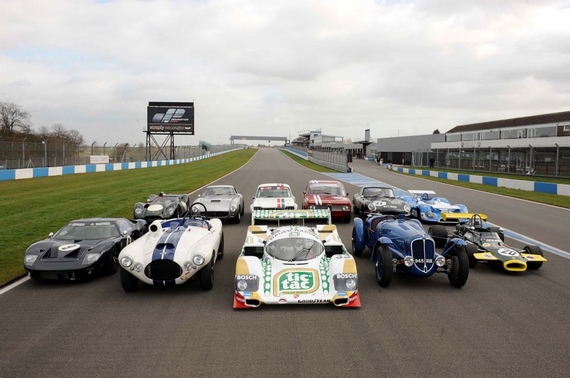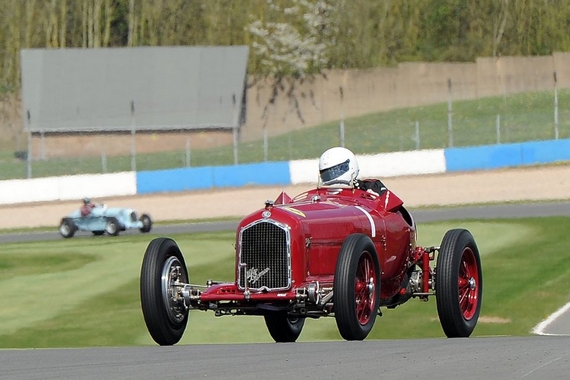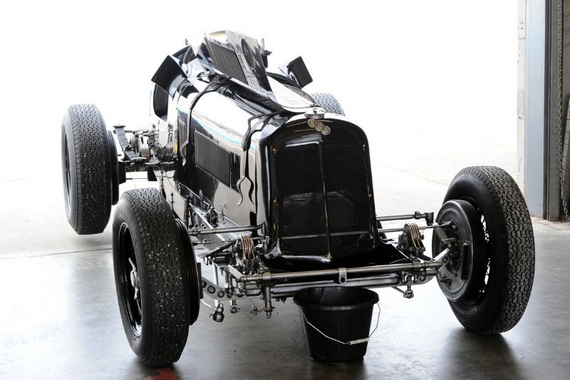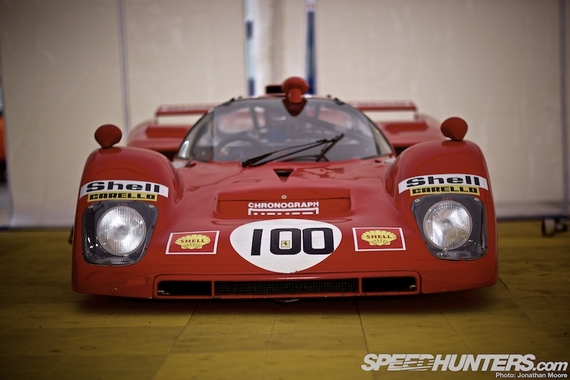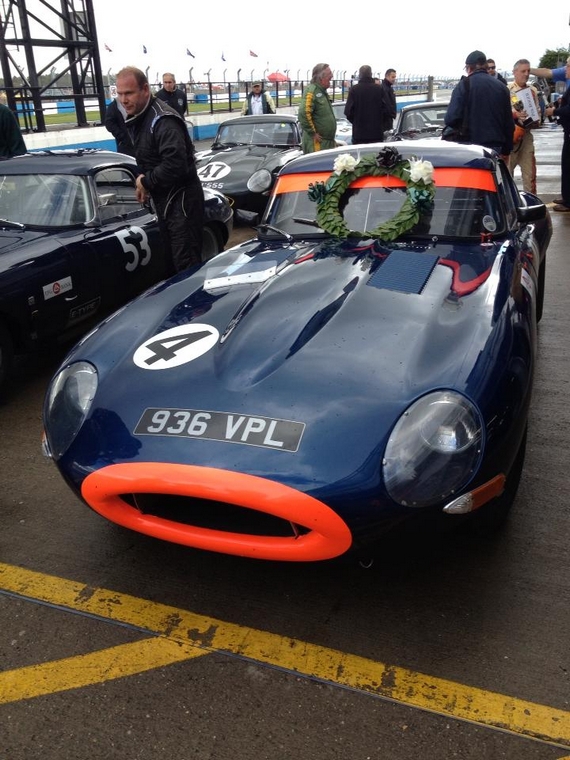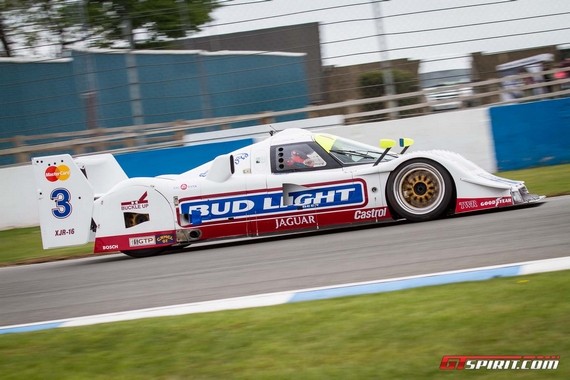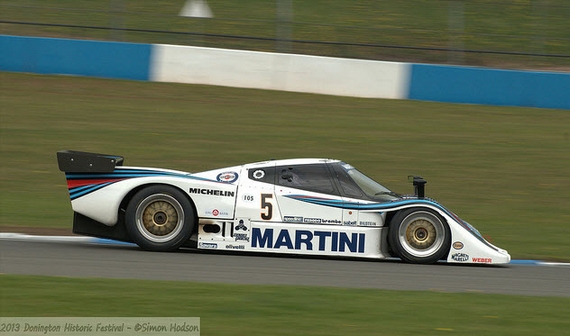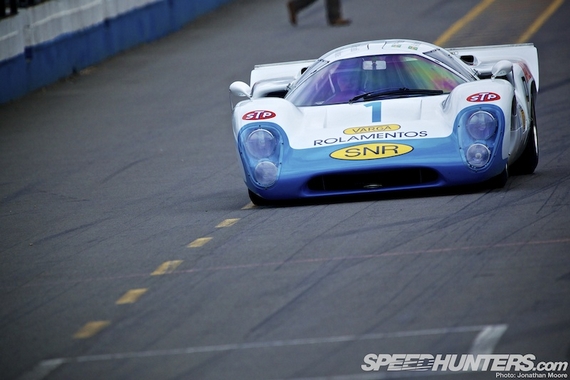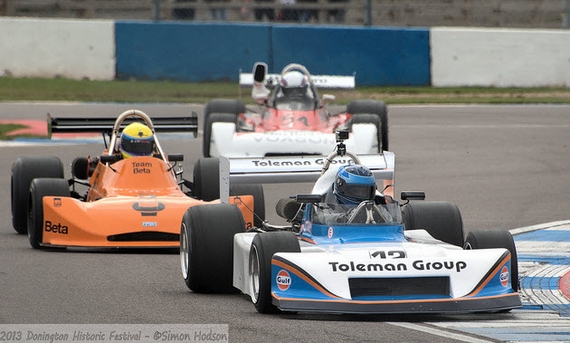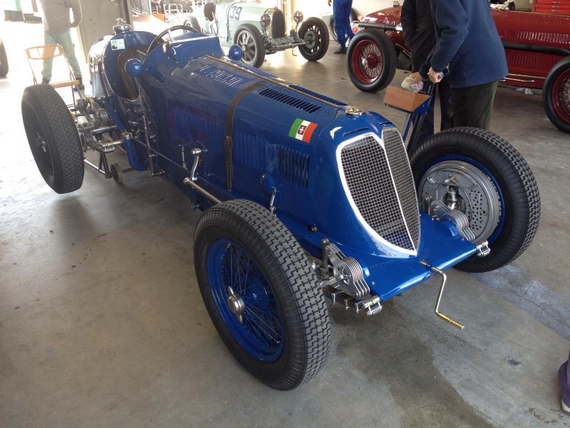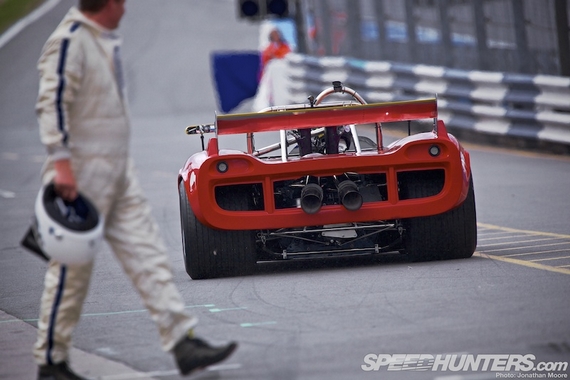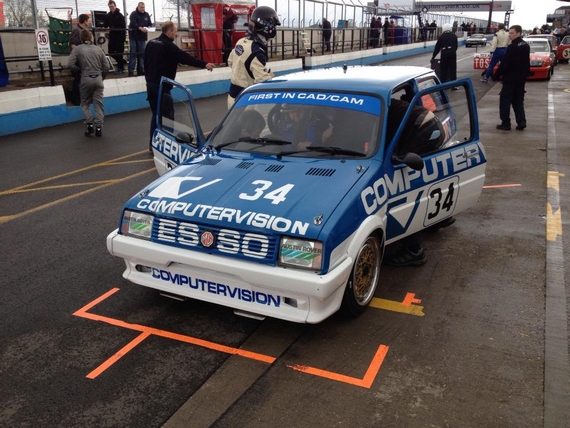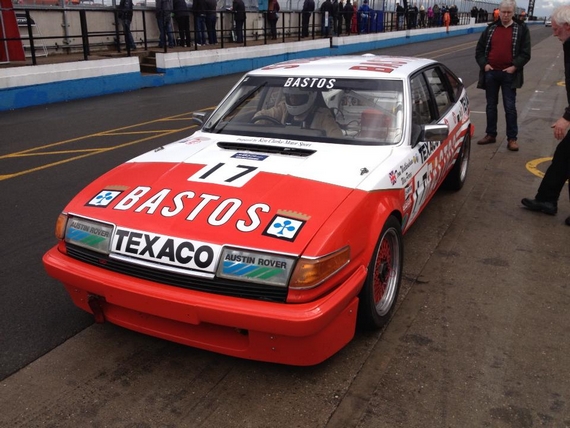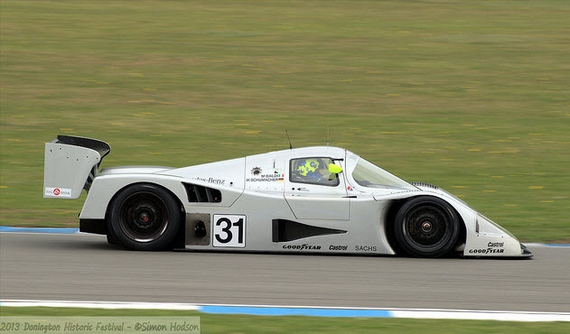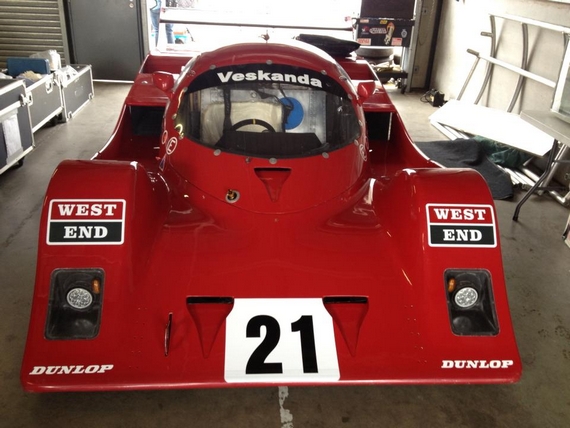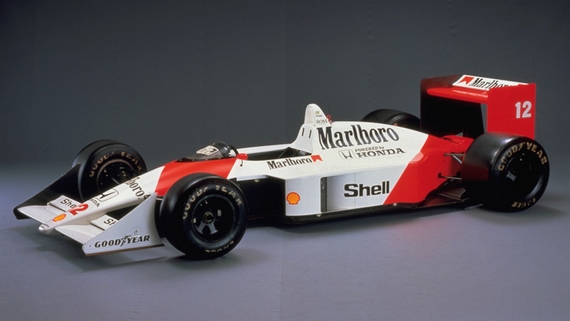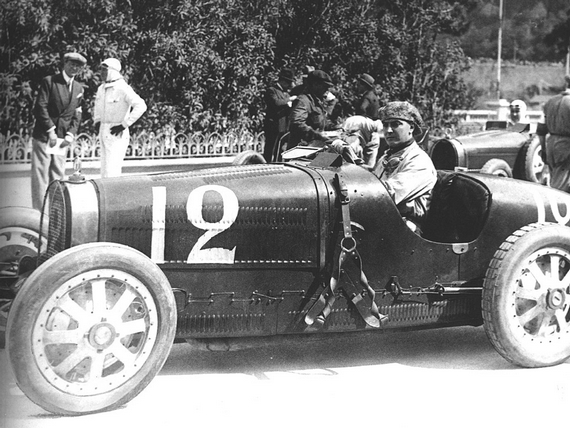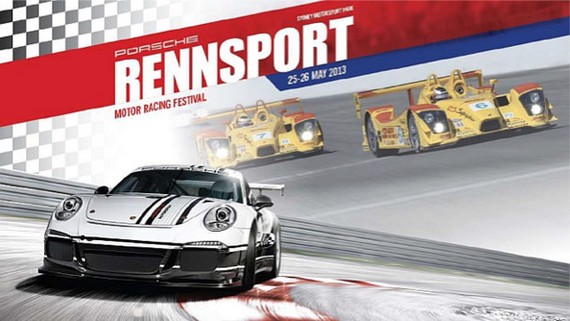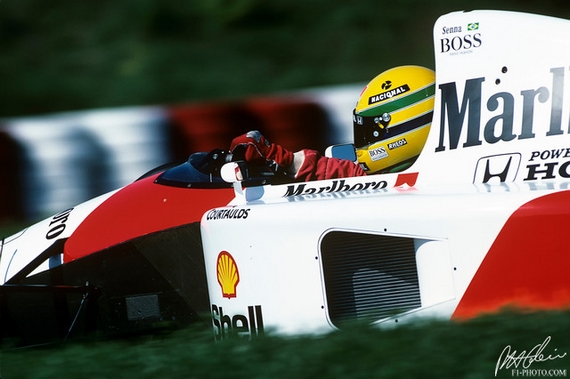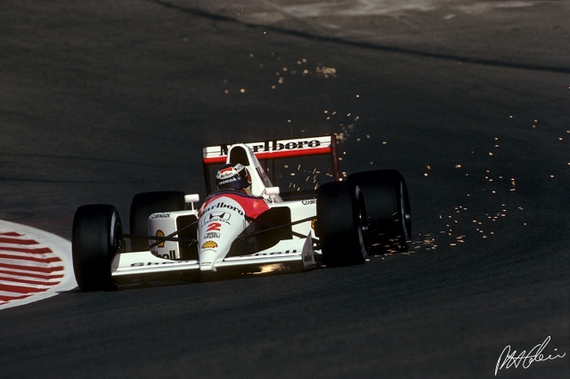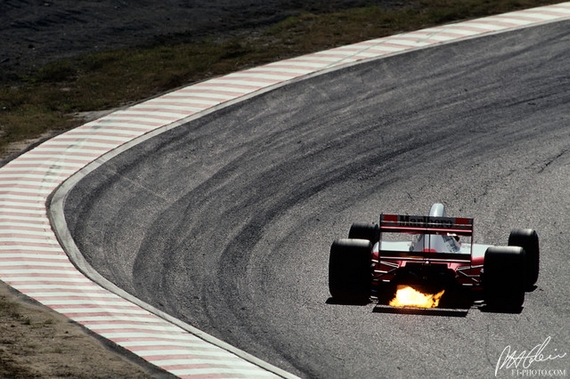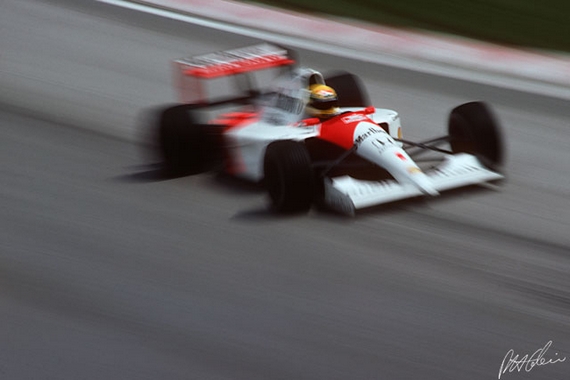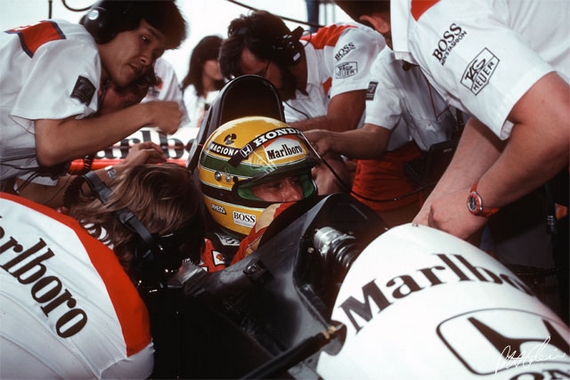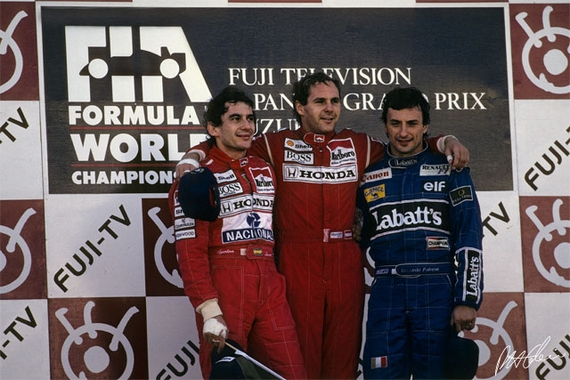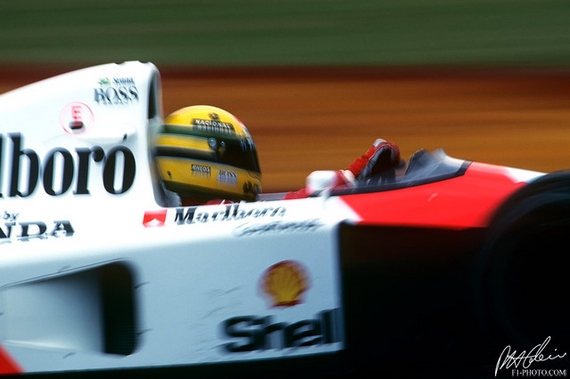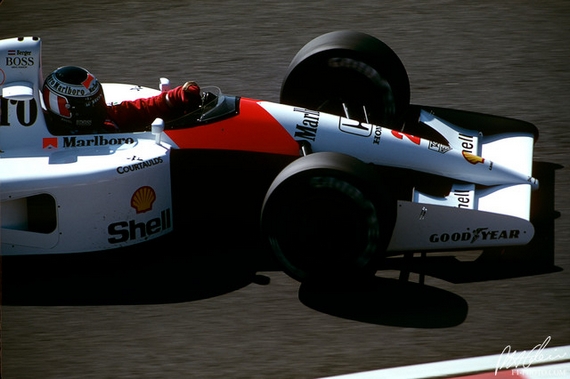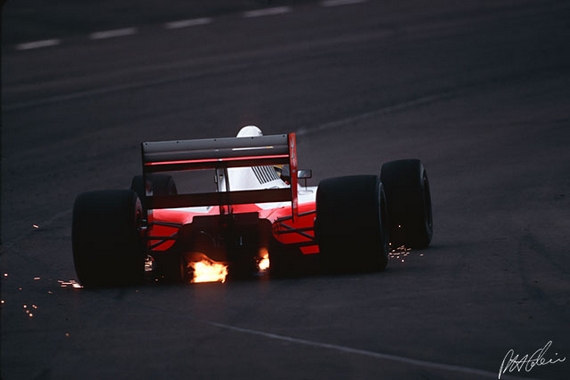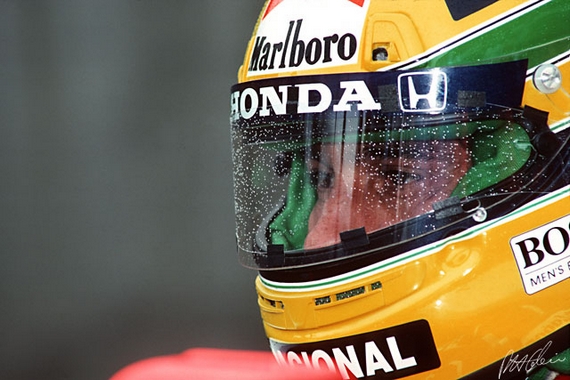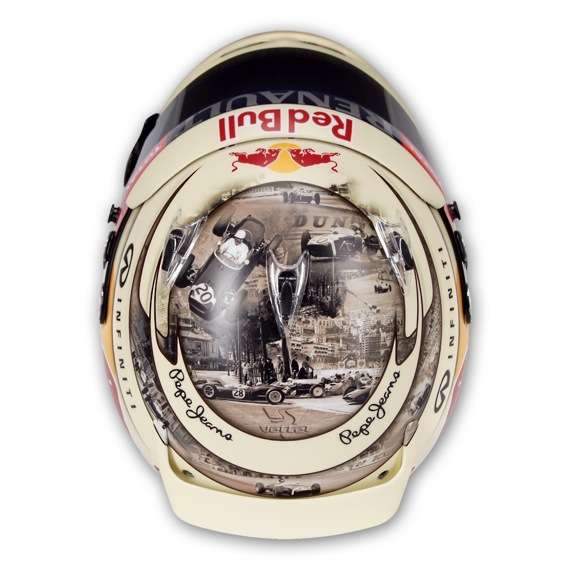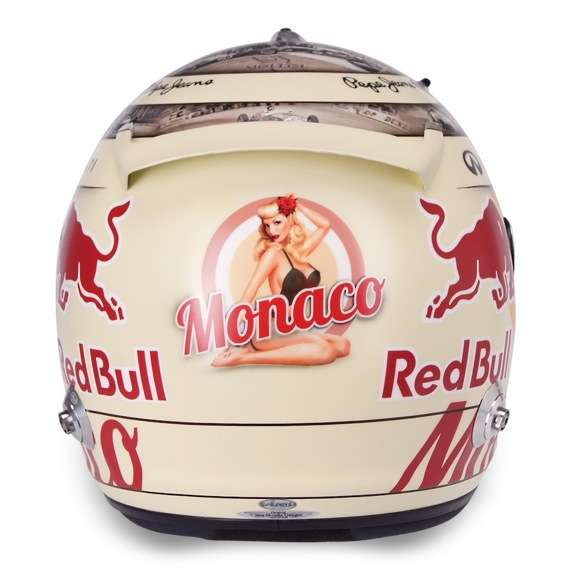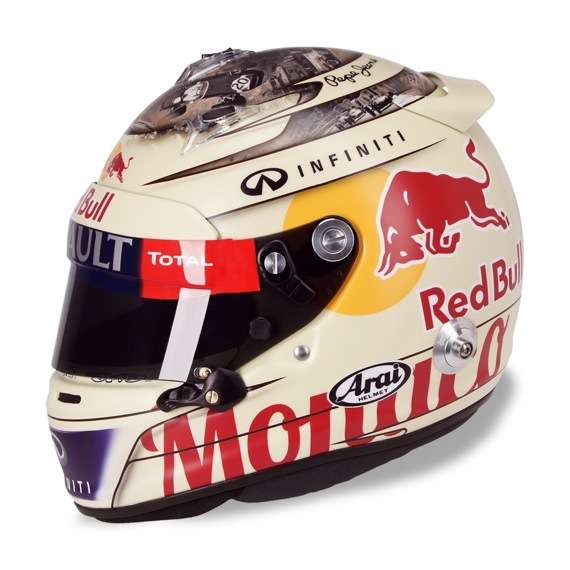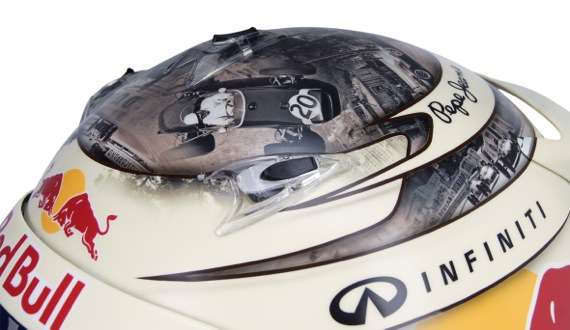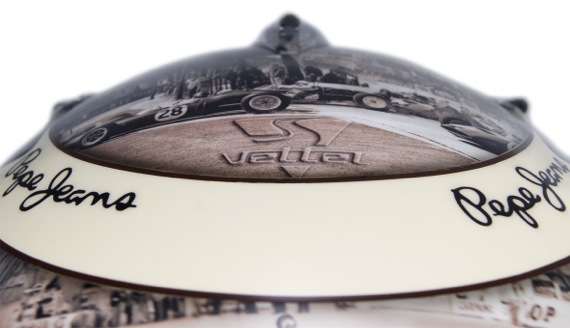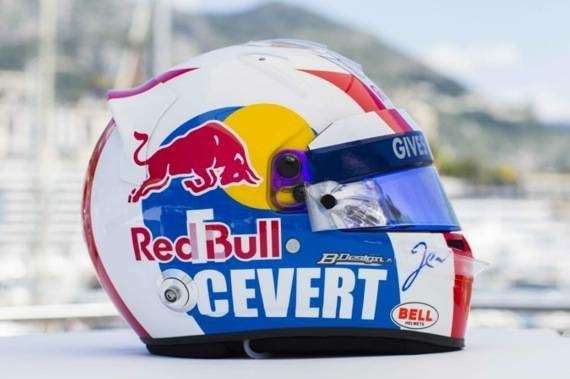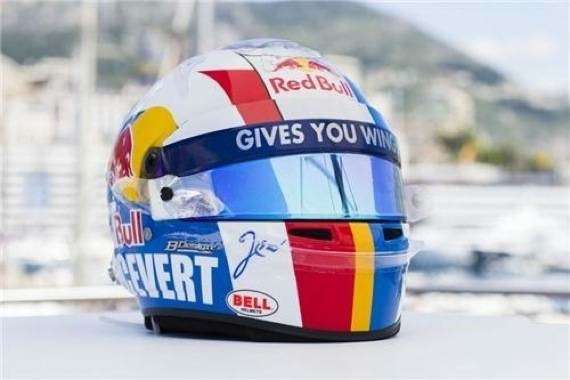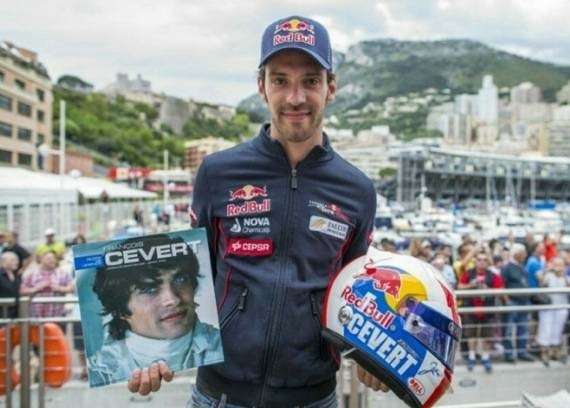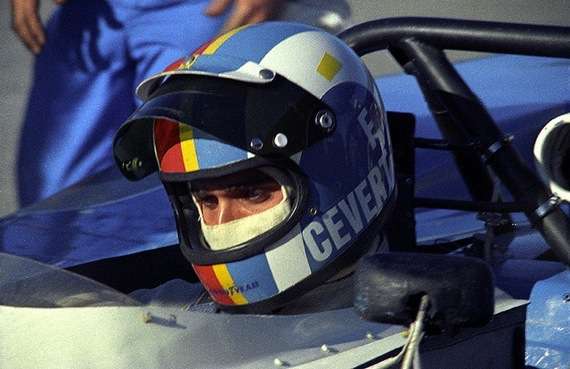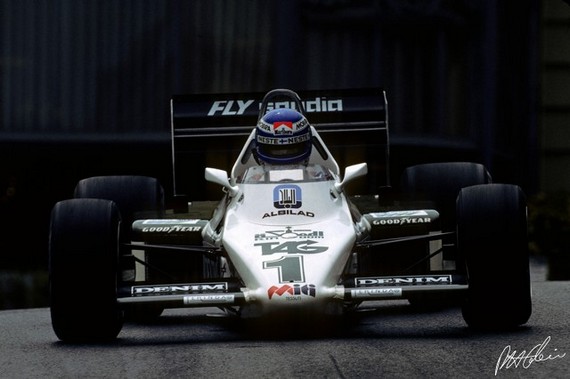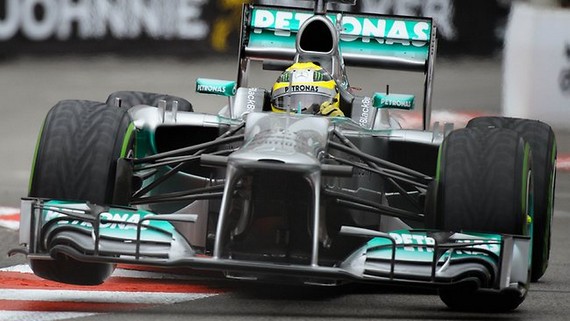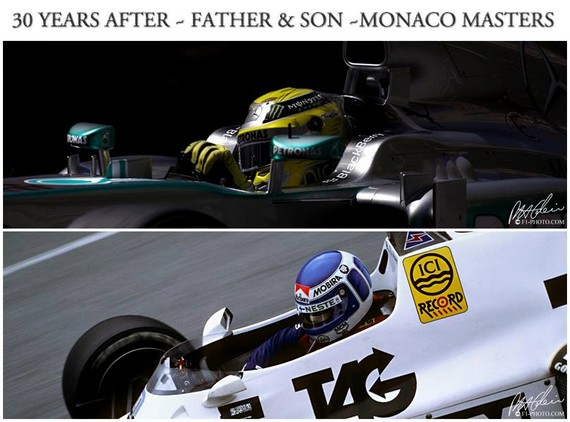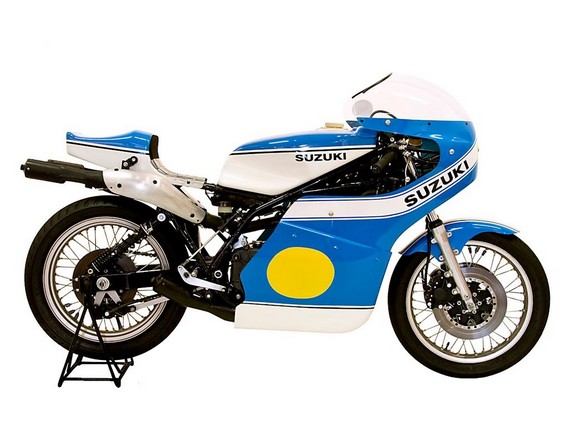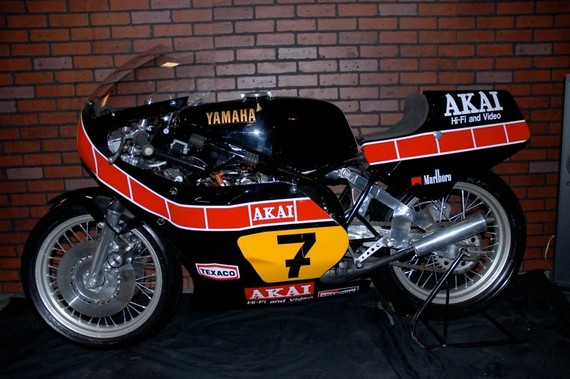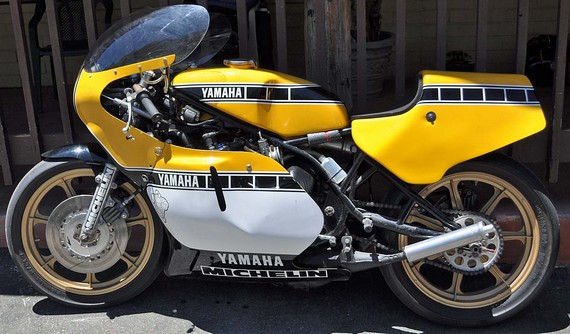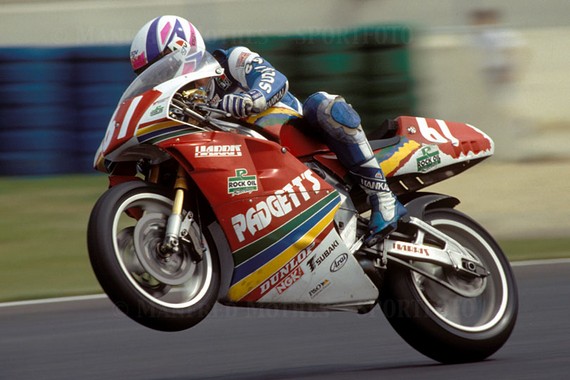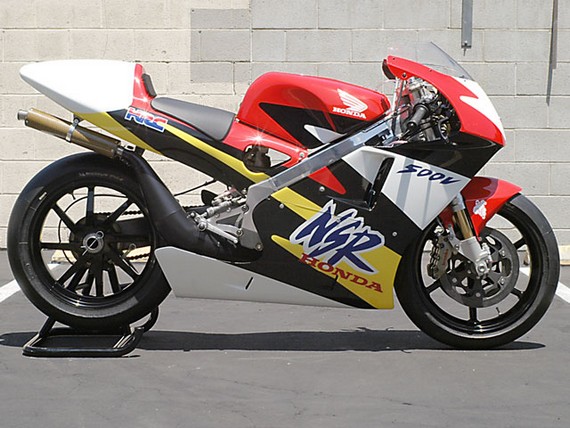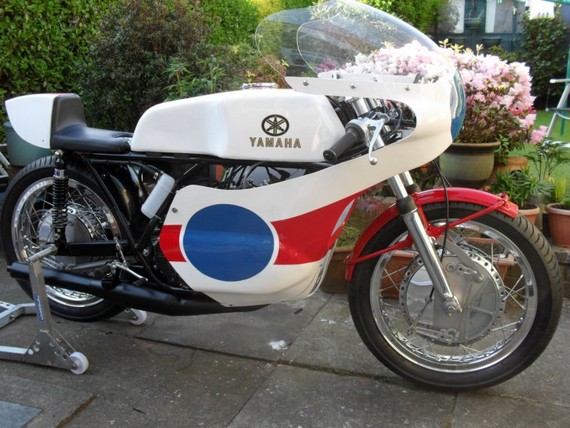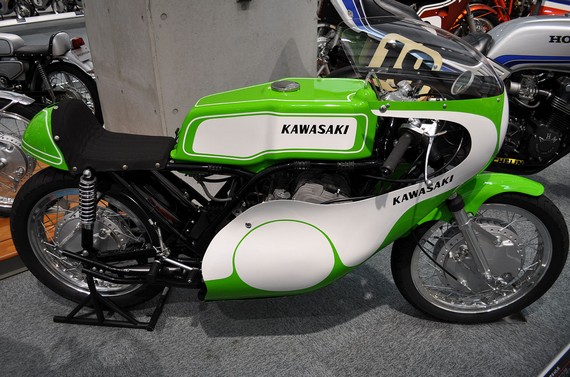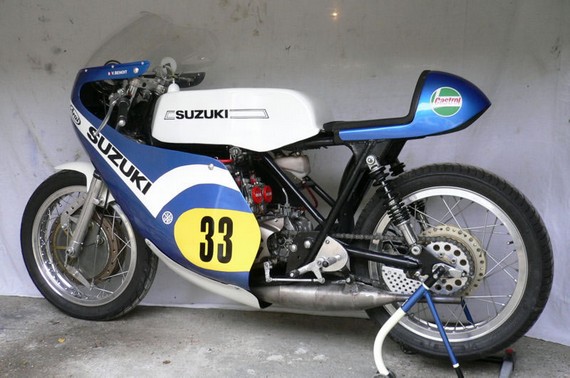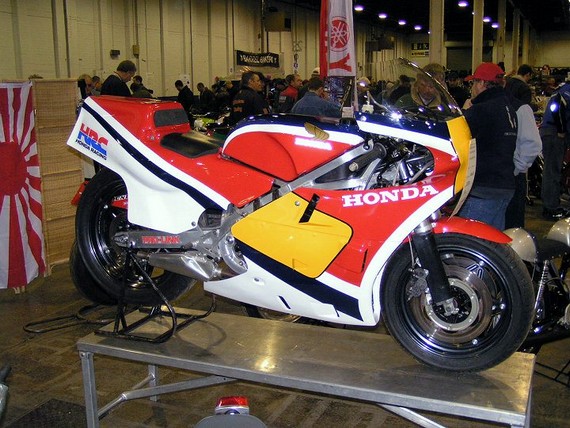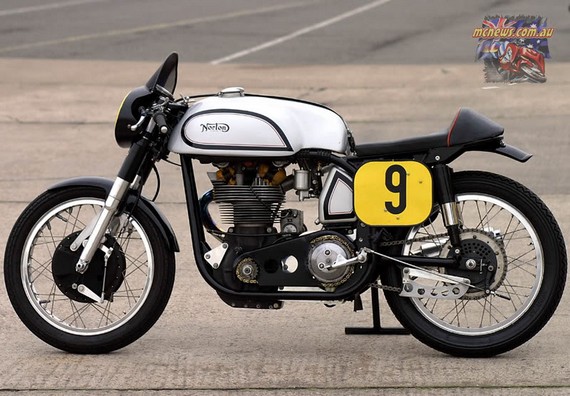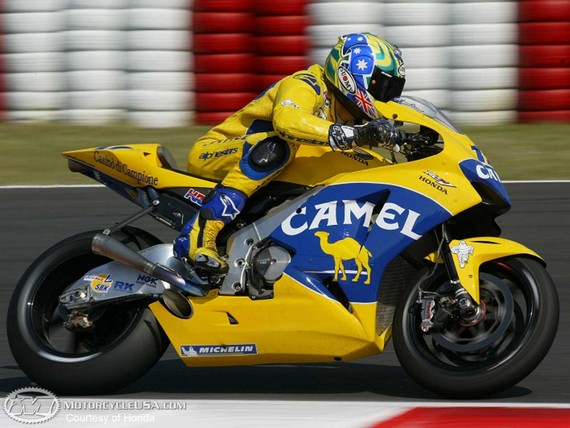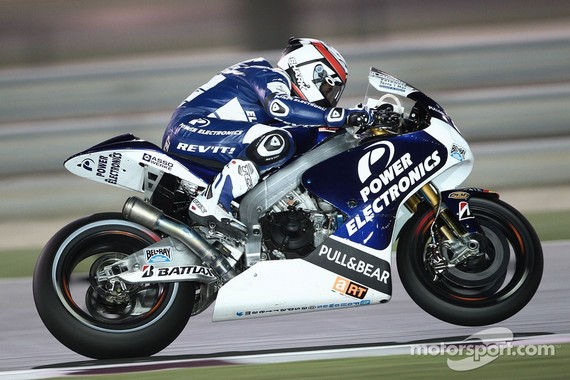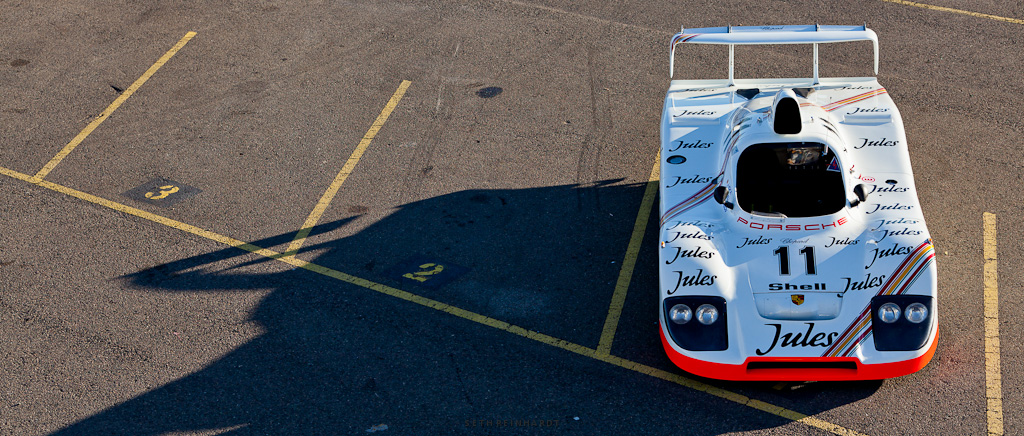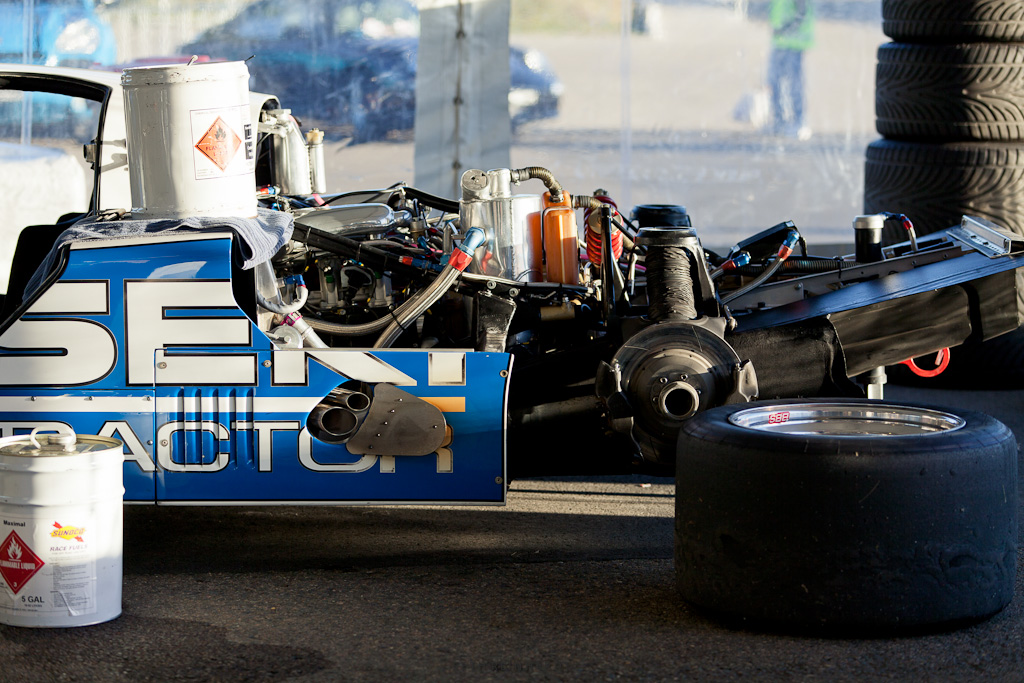![Suzuki RG500]()
One of the most popular subjects in MotoGP news and gossip over the past months has been the possibility of the so called “Production Racers” returning to the series blue ribbon class and counteracting the dwindling grid numbers.
by Francisco Cunha
In the past, private riders on “off the shelf” bikes trying their luck on the World Series formed the backbone of the GP racers. The expression “Continental Circus” came from the caravan of riders leaping from circuit to circuit across mainland Europe with their machines on the back of trailers, pulled by a van loaded with spares.
It is important to explain that the concept of a privateer rider competing with a “Production Racer” is different from what are now called Private Teams in Moto GP, or to be more accurate, Satellite Teams. The later teams always receive factory support to some degree, implying that the manufacturer has full grip on the bikes technology and updates. Most importantly, the squad will not own the bikes: they are simply leased (for sums up to 2-4M€) for a season and then returned, probably to end up on a crusher in the Far-East to keep factory secrets safe.
So what is a “true” privateer with a Production Racer? Quite simply, when a private racer decides to contest Grand Prix racing he goes to a dealer, buys the bike and races it. It´s his machine, he can update it as he likes and if he later desires to, he can sell it to anyone with the cash. Potential customers would be fellow racers who wouldn´t mind getting on an older bike, while others could be interested in it for national races or just to park it in a garage.
By now, it´s much clear that the concept of an “off the shelf” GP bike is something linked to the past, where amateurism and gentleman racers where the order of the day, instead of today´s high tech, bullet proof professionalism and multi-million dollar budgets.
The recently debuted CRT concept, which to cut a long story short, implies using production based engines in prototype chassis, has some similarities with a Production Racer, and in fact, the Aprilia… sorry “ART”, bike has resemblances with the concept itself, but we´ll explain it thoroughly ahead.
But let´s talk about the bikes then, from 1949 to today. In a sort off top 10
10 – Yamaha TZ 500 (1980-1983)
![Yamaha TZ 500]()
Yamaha TZ 500 1981 Barry Sheene (“Worst bike ever!”) – twostrokebiker.blogspot
- Built to break the Suzuki RG 500 monopoly among private riders, Yamaha´s own specific top class production racer was launched in 1980 with big expectations, aiming to dethrone the rival Japanese machine as the best private 500 money could buy. While in 1980 Kenny Roberts Sr. was trying the YZR 500 OW48, featuring reversed outer cylinders and an aluminium square frame, the TZ500 power plant was based on the older 4-inline engine, the major difference being a mechanical YPVS, instead of electrical. Handling wise, it used a steel chassis with aluminium swingarm, coupled to thinner forks on front and a simplified rear shock and brakes coming from the TZ350. Although it looked the part on paper, it failed miserably due to it´s poor handling, the chassis flexing too much. Privateer Jack Middleburg did win the 1980 Dutch GP with a TZ but his machine used a Nico Baker chassis and front forks borrowed from a … Suzuki RG 500. When Barry Sheene bit the bullet and set his own team in 1980, he quickly got his hand on a TZ, but his later statement of labelling it “The worst bike I ever rode” really sums it up. Not even factory backed riders with some exclusive kits like Sheene himself or Sonauto backed Marc Fontan had any luck with the bike. In fact most of the TZ500 engines ended up propelling sidecars, many years after production ceased. On the other hand the big sisters TZ 700/750 beasts where a success and became one of the most ferocious racing bikes ever. Other interesting fact is that the 1980 GP 500 works Cagiva, in the absence of an available in-house powerplant, used a custom Italian made frame coupled to a TZ500 engine.
![1980 Yamaha TZ750]()
1980 Yamaha TZ750 – The Beast – in Yamaha America colours – labusas.org
9 & 8 – ROC & Harris Yamaha 500 (1991-1997)
![Harris Yamaha 500]()
Harris Yamaha 500 – James Witham in Magny-Cours 1992 – Daidegas Forum.com
- 1990 is a season mostly remembered as belonging the “Age of the Superheroes”, one of the years eligible for “best ever” due to the Rainey/Schwantz/Doohan duels. But things were far from legendary further down the field. In that year´s US GP, only ten bikes crossed the finish line and the last two had been lapped on three occasions. With similar situations repeating
themselves all over the calendar, that caused some head scratching to resolve the lack of competitive bikes for privateers, as the existing Honda and Suzuki were more fit to museums. Yamaha, through Kenny Roberts influence, proposed building a batch of year-old spec YZR 500 V4 engines and selling them to private teams, who would install them in custom built frames. A 1990 bike was handled to team Millar for a year to see if they could manage the more complex equipment and their experiment was a success, Eddie Laycock by far the best privateer in 12th overall, even beating works riders Alex Barros and Sito Pons. So in 1992 French frame specialist ROC (builders of the innovative Elf-Honda 500 from the 80s) and British tuner Harris answered the call, and their 75.000 GPB proposal gave the grid numbers a much welcomed boost. Although apparently similar save for the fairings, both bikes had different construction philosophies, with the Harris being a replica of the 1990 Team Roberts works YZR 500 that Wayne Rainey rode to his first world title. Across the channel, ROC used their French connections to build a frame copied from the 1991 Sonauto Yamaha satellite YZR 500 handled by Jean-Phillipe Ruggia and Christian Saaron.
![ROC Yamaha 1992]()
WCM ROC Yamaha 1992 – James Toseland at Goddwood Festival of Speed
- The following season Niall Mackenzie put a team WCM (of later Red Bull Yamaha fame) ROC-Yamaha on the final step of the rostrum of the British GP, helped by wild-card Carl Fogarty´s works Cagiva running out of fuel on the final lap. But the most informed fans will also recall that 92 was also the year of the big-bang engines, a big technological evolution started with Honda, allowing smoother power delivery and better tire life, which every works team copied to not stay behind. The ROC/Harris supplied teams could not afford such luxury and with lack of development over the years, they became nearly as slow as the bikes they were meant to replace. In an unexpected twist of faith, as it was Roberts Sr. himself who was behind the ROC/Harris concept, KR´s “Evil Empire” Team Robert Yamaha works team turned to the privateer ROC chassis as a stopgap when their early 1993 works bike proved ill-handling. In the hands of the Wayne Rainey and Luca Cadalora it even won races, but off course, using the factory big-bang engine and other top of the line items such as suspensions, brakes and tires.
7 – Honda NSR-V 500 (1997-2001)
![Honda NSR-V500]()
Honda NSR-V500 with customer livery circa 1997 – Sportzilla
- Honda´s lightweight V2 500 bike holds the distinction of being the last production racing GP 500 machine. With the Harris & ROC Yamaha proving dangerously slow by the mid-90s, Honda stepped in to prevent grids shrinking once again. Inspired by the works Aprilia RS400 campaigned by Loris Regianni from 1994 onwards, effectively an enlarged 250 that on occasion produced lap-times similar to the 500s, Honda took a simplified solution the problem. As the rules allowed 2 cylinder bikes to weigh less 30 kgs than the works V4s, Honda took their NSR 250 twin engine as a basis and re-designed it up to 500 cc, with the power deficit compensated by lighter weight, and more important, a simpler engine allowing maintenance costs to lower: price tag was 100.000 dollars back in the day. It was also much smoother to handle than the previous generation customer V4 bikes. First developed by the works Repsol Honda team (Tadayuki Okada took a stunning pole in it´s 96 debut) it managed to pick up some podiums and was an effective fix to the Harris/ROC problem, providing private riders a useful machine until the MotoGP era in 2002. The customer version launched in 1997 was 6 kg heavier but was still fast enough to allow riders such as Van Den Goodergh and Regis Laconi to display their skills and open the doors for top teams. The private V2s were still short of the podiums, with one single exception by Alex Barros in Donington Park that year, but the works bike fielded by Repsol Honda until 1999 got to the rostrum on several occasions. Unfortunately when in 1998 unleaded fuel was made mandatory, it completely blew away their chances for glory and they became also-rans, especially as Honda and Yamaha started providing much more competitive satellite V4s to the top private teams. Still, in the very wet 2001 Italian GP Haruchika Aoki crossed the chequered flag first but lost on aggregate times to Alex Barros West Pons NSR 500.
6 – Yamaha TZ 350 (1973 to 1980)
![Yamaha TZ 350]()
Yamaha TZ 350 1974 – Vintagebike.co.uk
- In the “Continental Circus” days, start line money was a basic need to help cover the privateer´s travel expenses and the more races you attended on the same weekend, more money you´d earn. So, some riders using the popular Yamaha TZ series on the 350 cc class started increasing the displacement of their twins between 1 and 4 cm3 so they could also have a bike eligible for the 500s. This upgrade had been seen since 1971 but with the earlier air cooled TD series. If not fast enough to keep up with the MVs, these middleweight bikes were reliable, handled well and some riders even made it to the top 10 in the 500 championship scoreboard or even better: Bruno Kneubuhler and Rob Gould were 3rd and 4th in the 1972 500 championship score, with Werner Giger fourth in 1973. Riding one of these overbored 350s, Chas Mortimer took Yamaha´s first premier class win in the 1972 Spanish GP, although we have to remind that it was a race skipped by the class of the field MV Agusta team.
5 – Kawasaki H1R (1969-1975)
![Kawasaki H1R]()
Kawasaki H1R – Wikipedia (note the frames wide and strong beams…)
- Older (I mean experienced!) readers will remember the (in)famous Kawasaki H-1, a 500 cc 3 cylinder two stroke road bike launched in 1969, whose frame barely could handle those then amazing 72 hp and earned itself such welcoming nicknames as “Black Widow”. Anyway, Kawasaki soon recognized their potential for GP500 and produced racing versions of it, with improved engine, brakes, suspensions and even fairings. New Zealander Ginger Molloy used an overbored Bultaco 350 and a Kawasaki 500 to took runner-up in the 1970 500 championship, not having won a single race but earning four second places. In the following season, in the absence of the dominant MV Agustas at the Jarama season finale, rider Dave Simmonds gave Kawasaki their first 500 cc race win. Still on the back of these successes, the H1R was a handful to ride, with the top riders commissioning their own frames (built by specialists such as Reynolds and SIMAC) to cope with the brutal power delivery. The H1R was also not very fond of reliability. No surprises than that with such features, the similar Suzuki TR was considered a better buy as with was a much more balanced bike. T. As a side note, the H1R´s compression ratio was so low that you could put start the engine just by spinning the back tire with your hand.
4 – Suzuki TR 500 (1967-1973)
![Suzuki TR 500]()
Suzuki TR 500 – IHRO.org.uk
- The Suzuki TR500 is in many ways comparable to the contemporary rival Kawasaki H1-R, because as explained earlier, both were launched during the late 60s and were based on road going sports bikes, in this case the two stroke T500 roadster, featuring an in-line two cylinders engine. The thing is that the Suzuki, albeit one cylinder less, was more reliable and handled better than the Green bike. First appearing with air cooled versions, it evolved to become water cooled (the first Japanese manufacturer to do it) and Jack Findlay, on a semi-factory bike, rode a TR500 to victory on the 1971 Ulster GP, a landmark first ever two stroke win on a 500 race. To add even more Silverware to Hammatsu´s stock, Findlay´s team-mate Keith Turner was runner-up behind the dominant Giacomo Agostini. Quoting private ace Jack Findlay, who rode both the Kawasaki and Suzuki, he choose the TR500 as it was “lighter, less complicated and produced peak power at lower rpm”. It soldiered for a few years more, until the arrival of the four cylinders RG in 1976 made it redundant. The most important in both the Suzuki and the Kawasaki was that despite based on road going designs (and crude handling to say the least in the H1R case), they were miles ahead of the 1950s designed singles in horsepower. These two primitive and rugged machines were an easy way for private riders to access the coming two stroke technology, that would dominate Grand Prix racing for the next decades and unleash to privateers previously unheard off horsepower levels.
3 – Honda RS 500 (1982-1990)
![Honda RS500]()
Early Honda RS500 with HRC livery – Robclubkawasaki
- When in 1982 Honda launched a customer version of the NS 500 V3 campaigned by Spencer in the world series most private riders stuck with the updated (and cheaper) Suzuki, and it was actually a works team Gallina ran RG 500 who picked up the title that year through Franco Uncini. But Spencer´s title the following year turned the RS500 a must-have, especially as the bike was a “real” replica of the works Honda. It´s main differences stood in superior weight due to less exotic materials and 5 bhp less, with the chassis close to the works bike. In typical Honda fashion, they were efficient, handled well and were very reliable for GP level. All through the late 80s, the nimble three cylinder was the weapon of choice by privateers such as Simon Buckmaster, Wolfgang Von Muralt, Boet Van Dulmen, Peter Linden and many more. They were not up there mixing with the works Marlboro Yamaha, Rothmans Honda or Pepsi Suzuki, more by lack of equipment than talent, but they formed the backbone of the grid. Buckmaster´s second place in the wet 1989 Italian GP was the best placing ever by an RS 500. Readers with the best memory will recall that Randy Mamola did win races in a V3, but it was a works NS500, such as the podium regulars handled by Ron Haslam or Raymond Roche. Despite a clear improvement over the Suzuki RG, with a more modern frame and reed-valve induction, it´s three cylinder engine, despite softer power delivery, was always meant to be outclassed in speed by the works V4´s that became the mainstay of the class from the mid-80s onward until the four stroke return in 2002.
2 – The British Singles (1949-Mid 70s)
![Norton Single]()
Norton Single – svrider.com
- By taking a quick glimpse at a sheet with the final championship scores on a certain season from 1949 up to early 70s, you´ll find some Italian and Japanese bikes on the top placings and, with notable exceptions, a vast horde of “Made in UK” Norton, AJS, Seeley, Matchless, etc you name it. The simple and reliable single cylinder British 500 cc air cooled engines were the best incarnation of the Continental Circus ride. It´s vice-free handling, many times featuring updated frames and suspensions, made it a sweet to ride compared to the Italian and Japanese multi cylinder exotic machines. Simple mechanics and low cost made it a success, even able to score race wins in the early 50s and not only when the mighty Italian and Japanese didn´t contest those races. By the end of their career in the late 60s, the brave riders sticking with them where risking their necks out on the corners, to make up for the time lost on the straights to the early 2-stroke Japanese invasion. Their last world championship scores where registered in 1974, coincidentally, the last won by a 4-stroke (Phil Read in an MV). An interesting note by author Kevin Cameron on the lack of alternative to the singles coming from Britan: there was no shortage of projects in the UK for multi cylinder engines, what was lacking were the resources to develop and produce them…
1- Suzuki RG500 (1976-1990)
![Suzuki RG50]()
Suzuki RG500 – home.planet.nl
- Why did the Suzuki RG 500 beat the British singles to (my) countdown of the best Production Racer ever? The answer is simple: the Norton et al were relatively conventional machines, with the Italians and Japanese putting up much more technically advanced equipment at the same time. What Suzuki did when they launched the RG500 Mk1 in 1976 was simply providing the privateers a race ready 4-cylinder two-stroke 500 with disc-valve induction. This is, a state-of-the art bike in a package containing what was then seen as the winning formula. Yes, there were differences in carburettors, cheaper materials, etc but the concept was all there. It was the best ever a private rider could ever lend his hands on, taking account what was running up front in the day. Honda did similar with the RS500 years later, but do note it was a triple when all the top bikes used four cylinders and Honda themselves went for a V4 shortly after, while works Suzuki were not radically different from the customer ones until the V4 came in 1987. To get some ideia of the RG 500 success as a private bike, here are some interesting facts: in 1976, it´s first year of production, no less than 58 bikes where built (most produced 500 racer ever?) and in that season the top non-Suzuki rider was in 14th! In 1977, out of 32 riders to score world championship points, only five were using Yamaha (three works riders and two privateers). Winners include Will Hartog (1977 Dutch TT, 1978 Belgium and Finland), Boet Van Dulmen (1979 Dutch TT) and Jack Middleburg (1981 British GP). With constant improvements, it remained in production until 1985, and an updated engine was sold until 1988. Despite losing some ground to the more modern RS500 from the mid-80s onwards, it soldiered on until at least 1990, when raced by privateer Osamu Hiwatashi on the Japanese GP, although by know was more of a moving chicane.
Almost a production racer, but not quite
- And also a word for three bikes that in some way reminded me of the Production racer concept but could not be eligible for various reasons.
![Honda RC211V]()
Honda RC211V Team Pons, Troy Bayliss – Motorcycle.usa
- Honda´s first MotoGP 4-stroke bike, the RC211V, provided immediate success to the private/satellite teams who started using them in late 2002 and remained as such until the end of the 990 era in 2006. It was the bike to have during those five years, with even satellite riders such as Sete Gibernau, and Marco Melandri having a genuine shot at the title (remember the Yamaha only won with Rossi on the handlebars!) It was good enough also to provide Max Biaggi with his last genuine shots at the title in 2003 and 04 (without any aid from Honda whatsoever), Makoto Tamada the first Bridgestone MotoGP wins (Brazil and Japan 2004) and allowed a certain 2006 rookie to show his skills with several rostrums and poles: a certain Mr. Casey Stoner. When I saw it raced, I asked myself how Honda supplied to their customer teams a bike that was constantly beating their own riders (Repsol Honda took a single win in 2004 and 05). Still the expensive running costs, in those days, helped by the flurry of cash from the near banned tobacco sponsorship, rule it out of the “Production Racer” concept, besides the fact it was only leased and never sold to teams.
![ART with Randy De Puniet]()
ART with Randy De Puniet (Team Aspar) – motorsport.com
- With the CRT concept, Aprilia was the first team to provide a Moto GP machine that private teams could buy, selling them a racing spec RSV4 with carbon disc brakes. While some thought initially it featured their world champion Superbike, the engine number limitation in MotoGP puts it some 20 to 30 hp down according to some sources. The bike is cleverly named as ART (a mix of Aprilia with CRT) to dimiss the the idea of a cloaked entry by the Noale Manufacturer. This machine, along with the future Honda and Yamaha customer projects, could signal a proper return for the Production Based racers. The ART proved it´s worth in the CRT´s first year in 2012, displaying itself clearly as the top CRT over the privately developed FTR-Kawasaki and Suter-BMW projects, even mixing with some second string satellite bikes on several occasions.
![Ducati 998RS]()
Ducati 998RS PSG-1 Frankie Chilli 2004 – sizemoresr
And finally, going off from the Grand Prix. Ducati have been providing RS (Racing Specs) replicas of their WSBK title winning bikes since 1990 and many have potential to go very fast, with podiums on the reach of the fastest riders. The performance of the 916/996/998 family is much known (Frankie Chilli briefly led the championship in 2004 in a PSG-1 bike) and the same goes for the more recent 999 and 1098 models, that helped fill the grids with both quantity and quality. What would have been of the 2003 season without the customer Dukes?
by Francisco Cunha, visit my facebook here facebook.com/xgp2012Kawaxico@hotmail.com
Sources:
- “Japanese Racing Production Motorcycles” – Mick Walker ISBN-10: 0954435702
- “MotoGP Source Book: Sixty Years of World Championship Motorcycle Racing” – Julian Ryder – ISBN-10: 1844257231
- “Yamaha: All Factory and Road-racing Two-strokes from 1955-93” – Colin Mackellar – ISBN – ISBN-10: 1852239204
- “Team Suzuki” – Ray Battersby – ISBN-10: 0850454166
- “The Grand Prix Motorcycle: The Official Technical History” – Kevin Cameron – ISBN-10: 1935007017
Top 10: 500cc Grand Prix Production Racers is a post from Motorsport Retro, bringing you classic motorsport, cars, motorcycles and gear every day.
![]()
![]()





































































